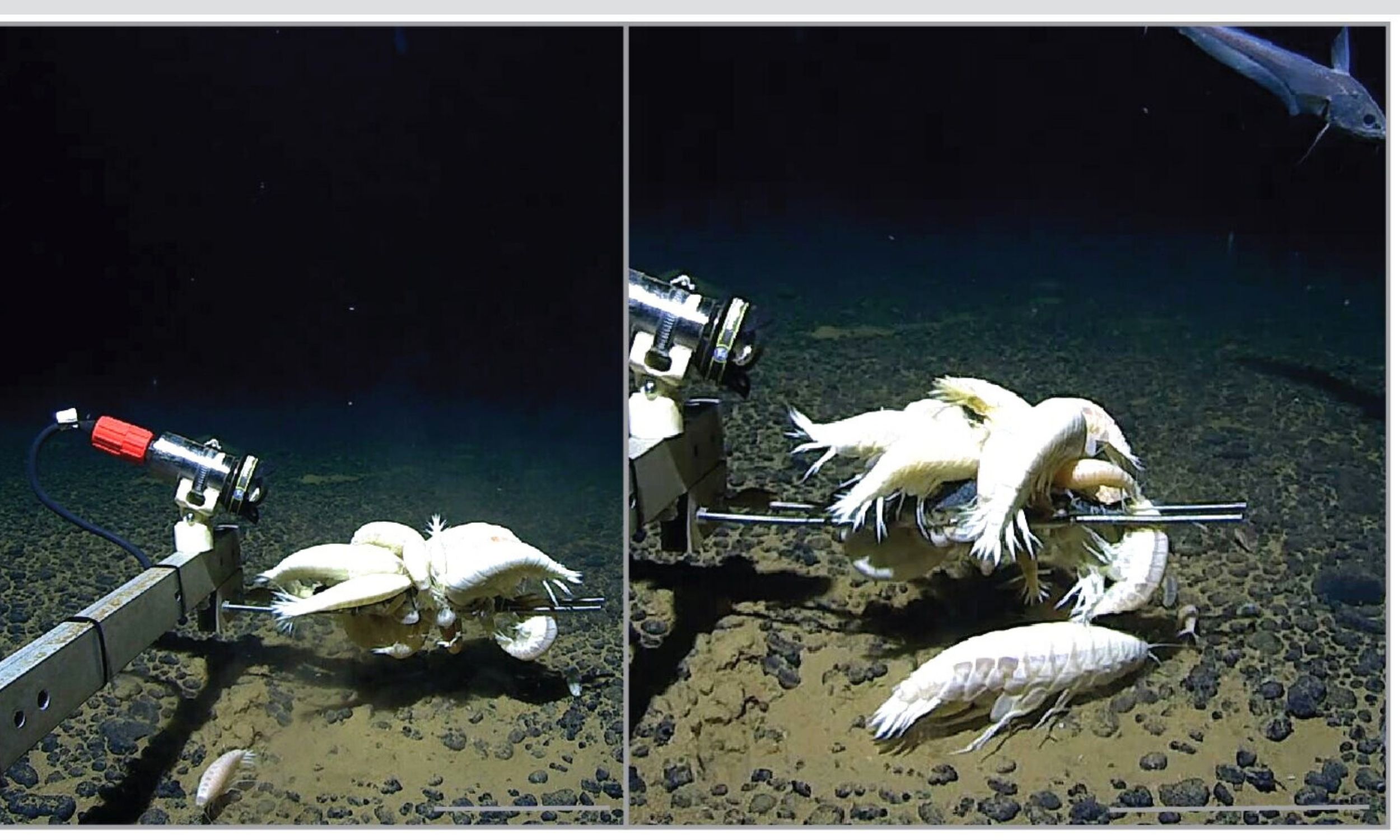New Research Reveals Supergiant Amphipod More Common Than Once Thought

In the vast and enigmatic depths of our oceans, it is often presumed that a creature is rare simply because it eludes our observation. A striking illustration of this phenomenon is the supergiant amphipod, Alicella gigantea, which can grow to an impressive length of approximately 13.4 inches (34 cm). Recent studies have shattered the notion of its scarcity, revealing that this massive crustacean is far more prevalent than previously believed.
According to groundbreaking findings shared by Dr. Paige J. Maroni from the University of Western Australia, Alicella gigantea may have been swimming right beneath our noses in the deep sea all along. This research brings to light the abundant presence of amphipods in extreme aquatic environments.
Researchers have long been aware that amphipods inhabit nearly every aquatic environment on Earth, from serene lakes and vibrant coral reefs to the profound depths of ocean trenches. Many species of amphipods thrive in extreme conditions, particularly in hadal zones that plunge deeper than 19,700 feet (6,000 meters), where they endure immense pressure.
Amphipods are a diverse group of crustaceans that share similarities with shrimp, yet they exhibit a remarkable range of adaptations that enable them to survive in inhospitable conditions. Some species have developed the ability to thrive in freezing temperatures and pitch-black environments, showcasing their resilience in the deepest reaches of our planet.
The earliest photographic evidence of Alicella gigantea was documented in the North Pacific at depths around 17,400 feet (5,300 meters). For over two decades, this species remained elusive, with scientists speculating about its rarity. Only a limited number of physical specimens were collected, leading to the belief that these giant scavengers inhabited isolated pockets of the ocean.
As research expeditions continued, however, a different narrative began to emerge. Scientists compiled a comprehensive dataset of 195 records from multiple global expeditions, allowing them to form a more complete picture of Alicella gigantea. Genetic analyses involving two mitochondrial genes and one nuclear gene revealed minimal genetic variation among populations, suggesting that this amphipod traverses the depths with few obstacles.
This discovery indicates that Alicella gigantea has an extensive presence across a vast network of trenches and plains, spanning the Pacific, Atlantic, and Indian Oceans. Such findings challenge long-held assumptions and expand our understanding of the capabilities of invertebrates existing in extreme environments.
Despite its appearances in geographically diverse waters, Alicella gigantea shows strikingly little genetic diversity. Some marine biologists propose that the cold temperatures and stable conditions found in the deep sea slow down evolutionary divergence, thereby maintaining similarity among populations across extensive regions. Others theorize that historical shifts in ocean currents and tectonic activity allowed these organisms to expand their range over millions of years.
The evidence strongly supports the idea of a singular, widely distributed species, rather than multiple closely related variants. Alicella gigantea is remarkable for its ability to thrive in cold, dark territories where food is scarce and environmental pressures are high.
Deep-sea inhabitants must endure near-freezing temperatures and often lack access to consistent food sources. Alicella gigantea occupies a wide range of depths, showcasing its astonishing adaptability. Studies of the stomach contents of various large amphipods suggest they primarily consume carrion or organic matter that sinks from above, a lifestyle that may confer the flexibility needed to survive in remote regions where food availability is unpredictable.
The significance of Alicella gigantea cannot be overstated. While marine conservation efforts primarily focus on well-known species, the lesser-studied inhabitants of our ocean’s abyssal trenches are equally critical to the health of marine ecosystems. By understanding how creatures like Alicella gigantea disperse and maintain their populations, scientists hope to gain insights into how deep-sea ecosystems react to environmental shifts.
Mapping distribution patterns in these underexplored regions of the ocean will not only guide future research but will also stimulate essential discussions regarding the impacts of human activities at the surface on habitats located thousands of feet below. Experts believe that we have barely scratched the surface of what lies beneath the ocean’s surface.
With a growing interest in sub-seafloor mining and commercial exploitation of ocean resources, understanding the dynamics of these regions has never been more vital. Insights gained from comprehensive genomic studies may uncover specific adaptations that allow organisms like Alicella gigantea to prevail in extreme conditions, which could have broader implications for biotechnology and climate resilience studies.
Our planet’s deep marine environments, often forgotten and overlooked, play a pivotal role in carbon storage, nutrient cycles, and other processes essential for maintaining the stability of the global ecosystem. The genetic makeup of species such as Alicella gigantea may provide critical clues as to how life on Earth has endured through past climate changes.
As large-scale expeditions continue to deepen our understanding of the ocean’s biodiversity, they prompt critical questions about how many other supposedly “rare” organisms might be far more widespread than we currently assume. Advancements in submersible technology and sampling equipment have made it increasingly feasible to explore remote ocean sites, enhancing our ability to uncover elusive marine life.
Indeed, there remains a wealth of knowledge to uncover, and Alicella gigantea serves as a potent reminder that sometimes the ocean’s hidden giants are far more abundant than we might expect. The study detailing these findings has been published in the esteemed journal, Royal Society Open Science.




























